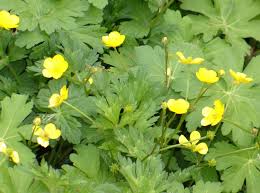Creeping Buttercup
Home / Weed Guide / Creeping Buttercup

Creeping Buttercup
It also spreads by hairy stolons (stems that creep along the ground for up to 100 centimetres, rooting and forming new plants at each node).
Stolons between plants are a distinguishing feature of Creeping Buttercup. They frequently disappear over winter once the daughter plant has established, allowing the daughter plant to grow independently and making Creeping Buttercup difficult to distinguish from a very similar looking annual weed called Hairy Buttercup.
During October to February, they have typical buttercup flowers with glossy yellow petals 20 millimetres to 30mm in diameter with five petals. The leaves are hairy and triangular in shape, about 5cm wide by 4cm long, and divided into three separate lobes, with the middle leaflet attached by a short stalk.
Creeping buttercup does well in wet soil. Each plant can live up to 18 months, and during that time numerous daughter plants could have been produced.
Control
Creeping Buttercup is often found in wasteland because of its tolerance to amitrole, simazine and low rates of glyphosate.
In turf either MCPA (Cleansweep and Soft Touch) or flumetsulam can be used to remove it, and most turf herbicides kill it successfully in lawns, especially those based on MCPA and/or MCPB (Select, Tandem, Thistrol Plus, Synergy and MCPB/MCPA).
Find out more about Creeping Buttercup